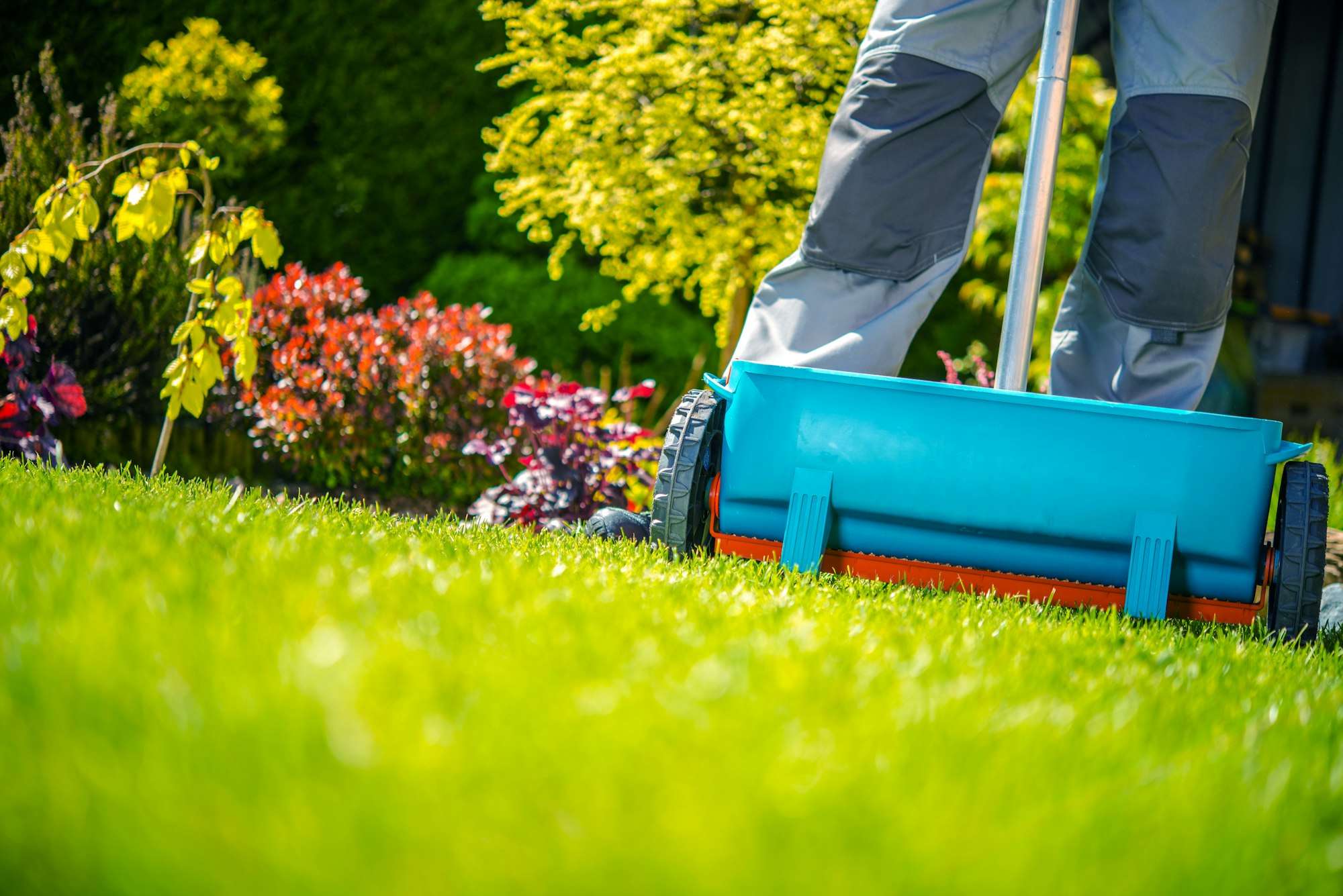As summer fades and cooler temperatures approach, it’s time to start thinking about preparing your lawn for the winter months. Fall fertilization is a crucial step in maintaining a healthy, vibrant lawn that will bounce back stronger in the spring. By understanding the importance of fall fertilization and implementing the right strategies, you can maximize your lawn’s health and ensure it thrives year after year. In this detailed guide, we’ll explore everything you need to know about fall fertilization, including the best practices, products, and timing.

Give your lawn the care it needs to thrive through the fall and into the spring! Contact Millburn Lawn & Landscape today to schedule your professional fall fertilization service. Let our experts handle the details so you can enjoy a lush, healthy lawn next year. Don’t wait—prepare your lawn for winter now!
Why Fall Fertilization Is Essential
Fall fertilization plays a vital role in lawn care. During the fall, grass absorbs nutrients more efficiently, which strengthens the roots and prepares the lawn for the winter dormancy period. Fertilizing in the fall helps your lawn store essential nutrients that will fuel its growth when the temperatures warm up again. This process not only encourages deeper root growth but also improves the lawn’s overall resilience against disease, weeds, and environmental stressors.
The Best Fertilizers for Fall Lawn Care
Understanding NPK Ratios
When selecting a fertilizer for fall, it’s important to understand the NPK ratio, which stands for Nitrogen (N), Phosphorus (P), and Potassium (K). These are the primary nutrients your lawn needs. For fall fertilization, look for a fertilizer with a higher potassium content, such as a 20-8-20 mix. Potassium helps strengthen the root system and enhances the grass’s ability to withstand cold temperatures.
Slow-Release vs. Quick-Release Fertilizers
There are two main types of fertilizers: slow-release and quick-release. Slow-release fertilizers gradually provide nutrients over time, offering long-term benefits and reducing the risk of over-fertilization. Quick-release fertilizers deliver nutrients more rapidly, which can be beneficial for an immediate boost but may require more frequent applications. For fall, a slow-release fertilizer is often recommended to ensure sustained feeding throughout the season.
Timing Your Fall Fertilization for Maximum Effect
Optimal Timing for Cool-Season Grasses
Cool-season grasses, such as Kentucky bluegrass, fescue, and ryegrass, benefit the most from fall fertilization. The best time to fertilize cool-season grasses is early fall, typically between September and October, when the temperatures are cooler but the grass is still actively growing. This timing allows the grass to absorb nutrients efficiently and establish strong roots before winter.
Late Fall Fertilization Tips
A second application of fertilizer in late fall, often referred to as “winterizer,” can further prepare your lawn for the cold months ahead. This application should be done just before the first frost, around late October to early November. Winterizer fertilizers are specifically formulated to promote root growth and improve the lawn’s winter hardiness.
Best Practices for Fall Fertilization
Soil Testing Before Fertilization
Before applying any fertilizer, it’s important to test your soil to determine its nutrient levels and pH balance. Soil testing will help you identify any deficiencies and choose the right type of fertilizer for your lawn’s specific needs. Many local extension offices offer soil testing services, or you can use a DIY soil test kit.
Proper Application Techniques
To maximize the effectiveness of fall fertilization, ensure that you apply the fertilizer evenly across your lawn. Use a broadcast spreader to achieve uniform coverage and avoid over-fertilizing any areas, which can lead to nutrient runoff and potential damage to the grass. Water your lawn lightly after fertilizing to help the nutrients penetrate the soil and reach the root system.
Combining Fertilization with Aeration
Aeration is another essential lawn care practice that pairs well with fall fertilization. Aeration involves creating small holes in the soil to allow air, water, and nutrients to reach the grass roots more easily. By aerating your lawn before fertilizing, you can improve soil compaction, enhance nutrient absorption, and promote healthier root development.
Common Mistakes to Avoid in Fall Fertilization
Over-Fertilizing
One of the most common mistakes homeowners make is over-fertilizing their lawns. Applying too much fertilizer can lead to nutrient runoff, burning the grass, and contributing to environmental pollution. Always follow the recommended application rates on the fertilizer packaging and avoid the temptation to add more, thinking it will yield better results.
Neglecting to Water After Application
Another mistake is neglecting to water the lawn after applying fertilizer. Watering helps the fertilizer dissolve and absorb into the soil, making it more accessible to the grass roots. Without proper watering, the fertilizer may sit on the surface and be less effective, or worse, it could be washed away by rain.




